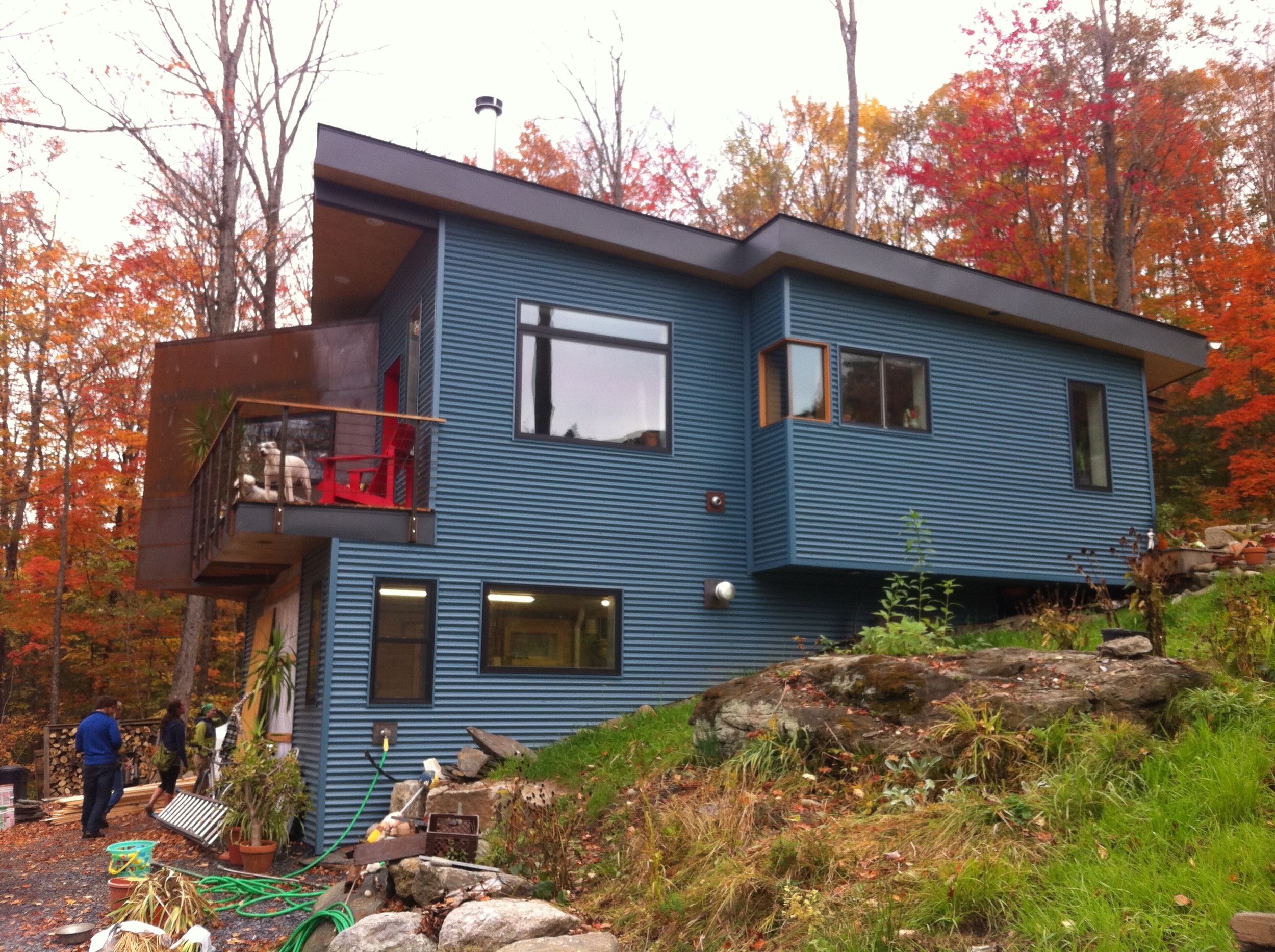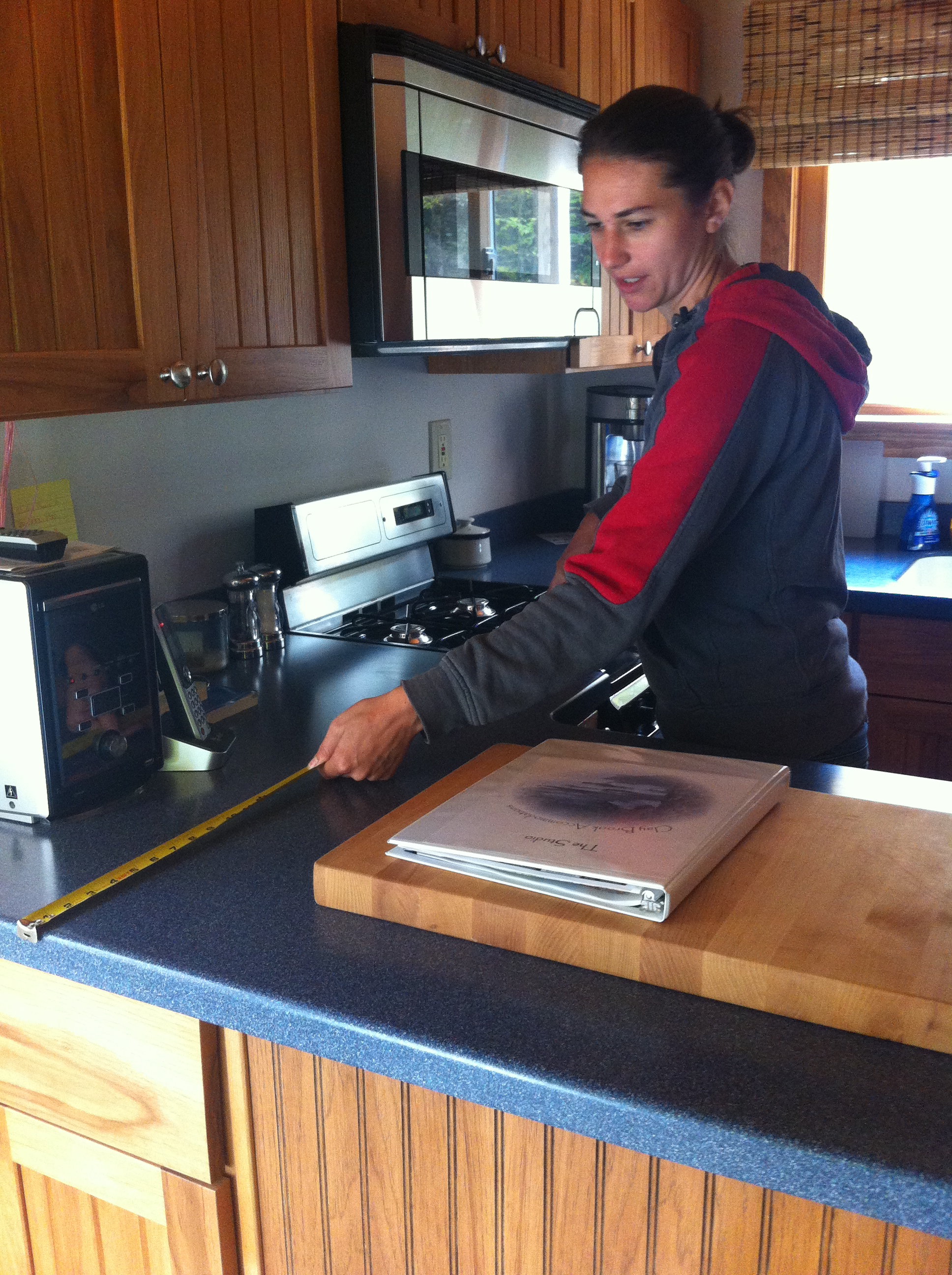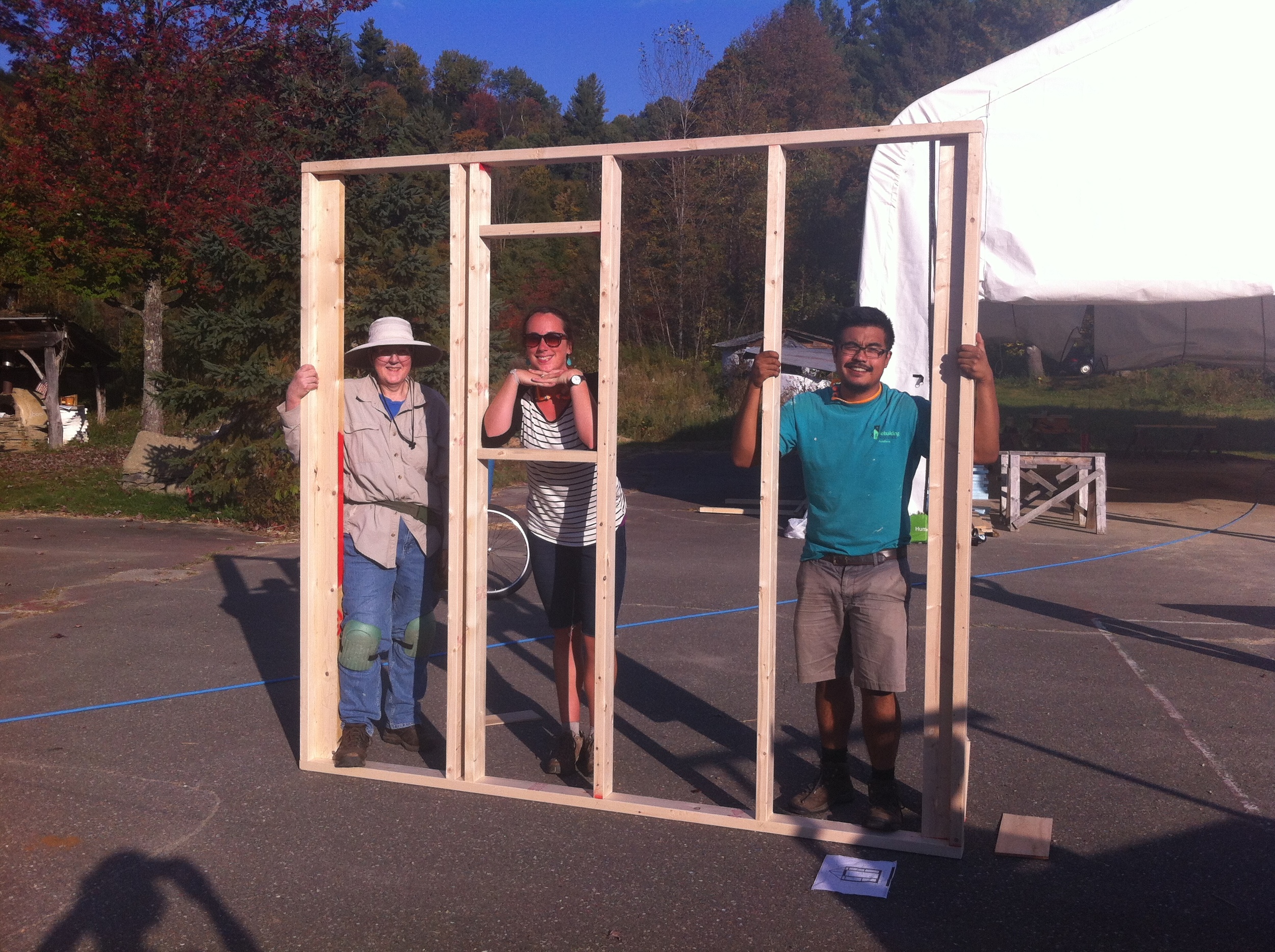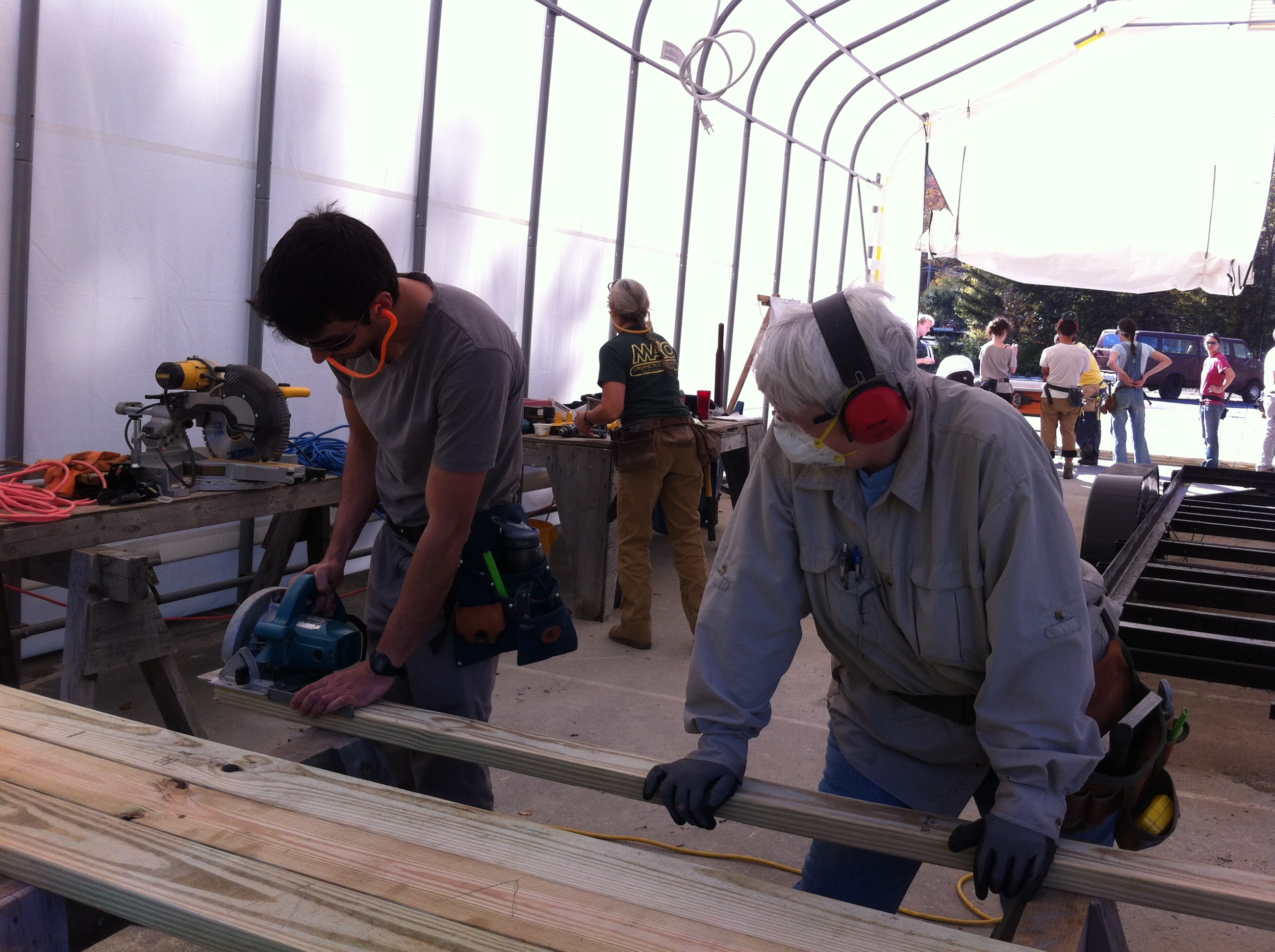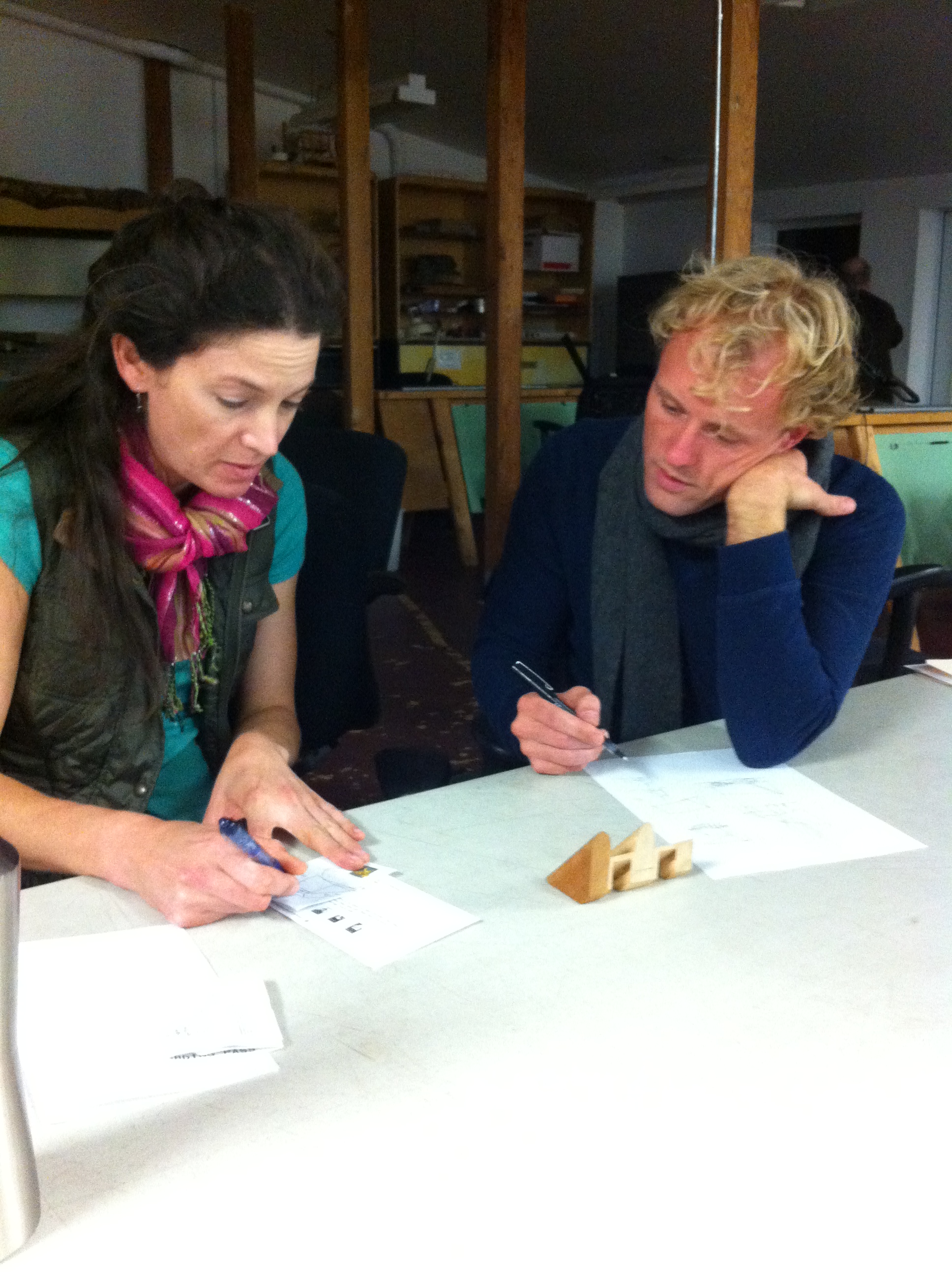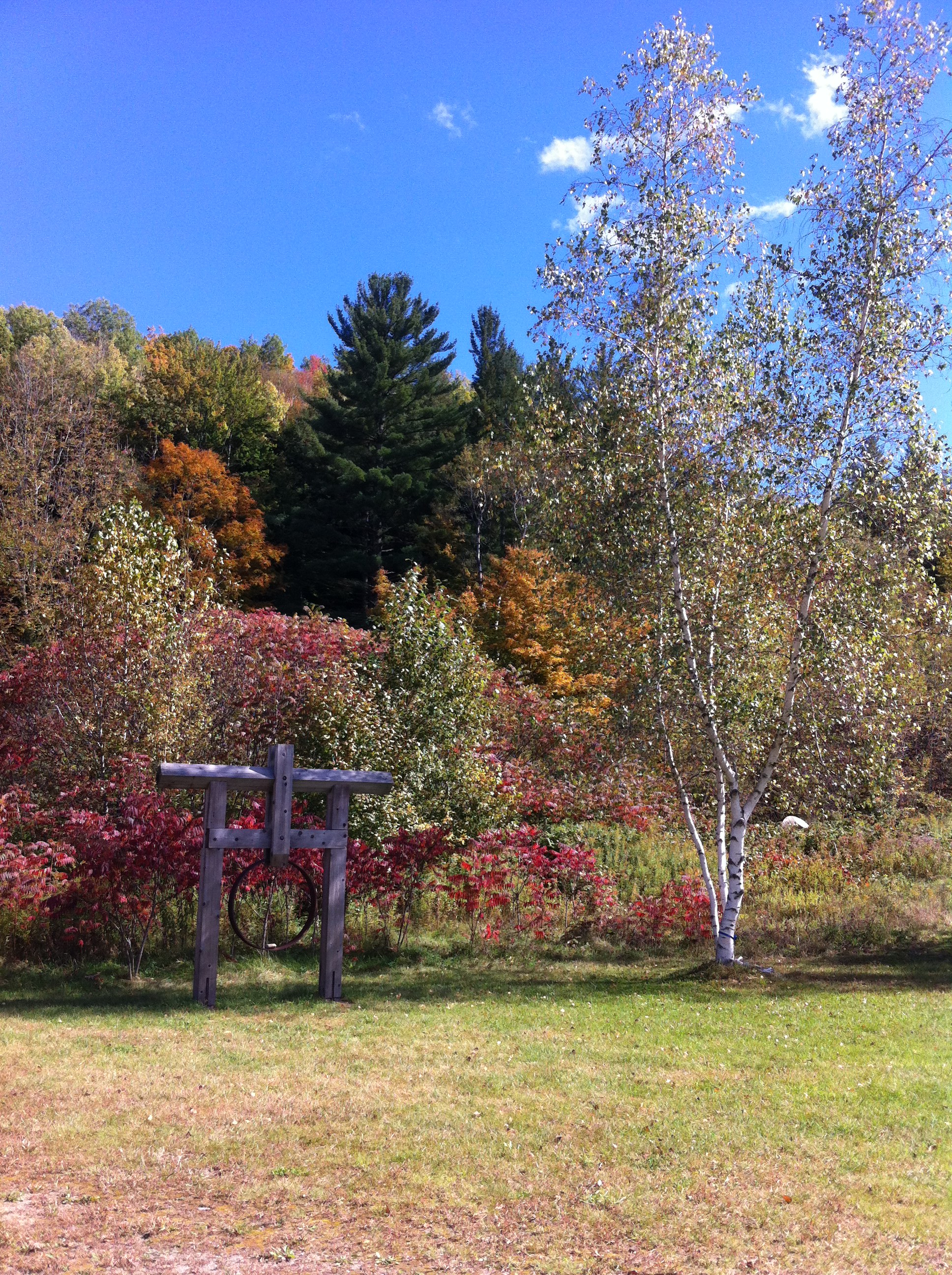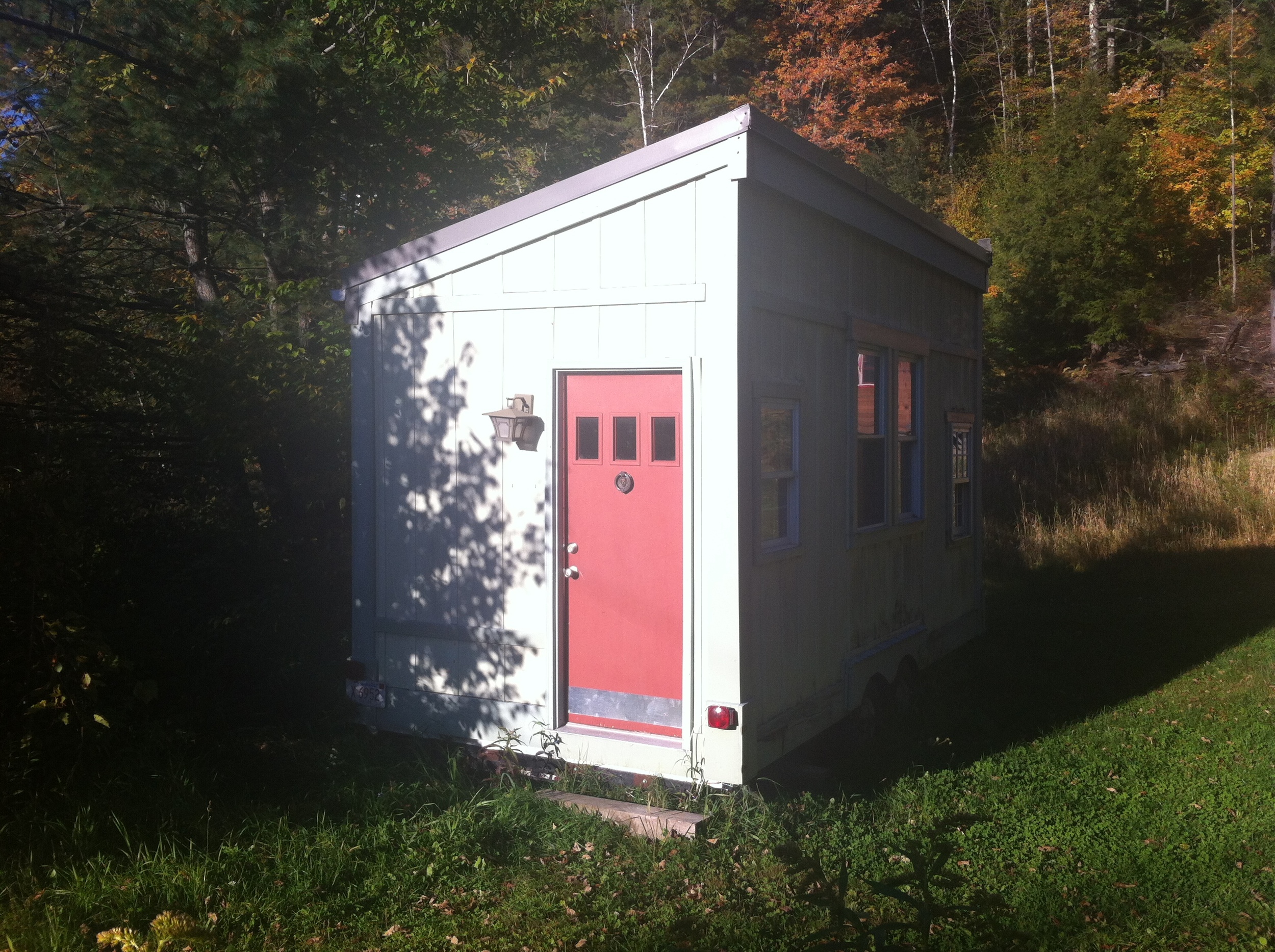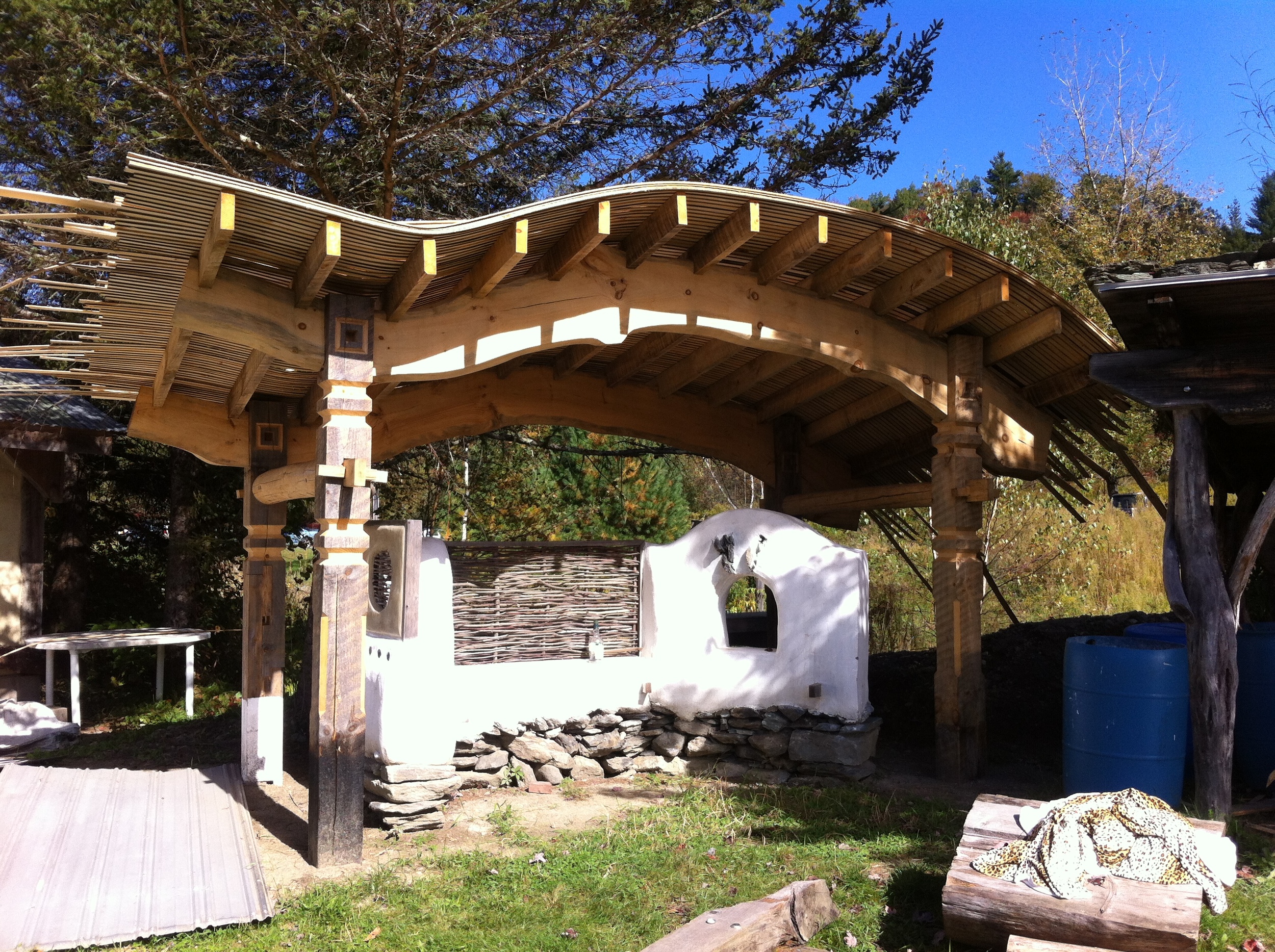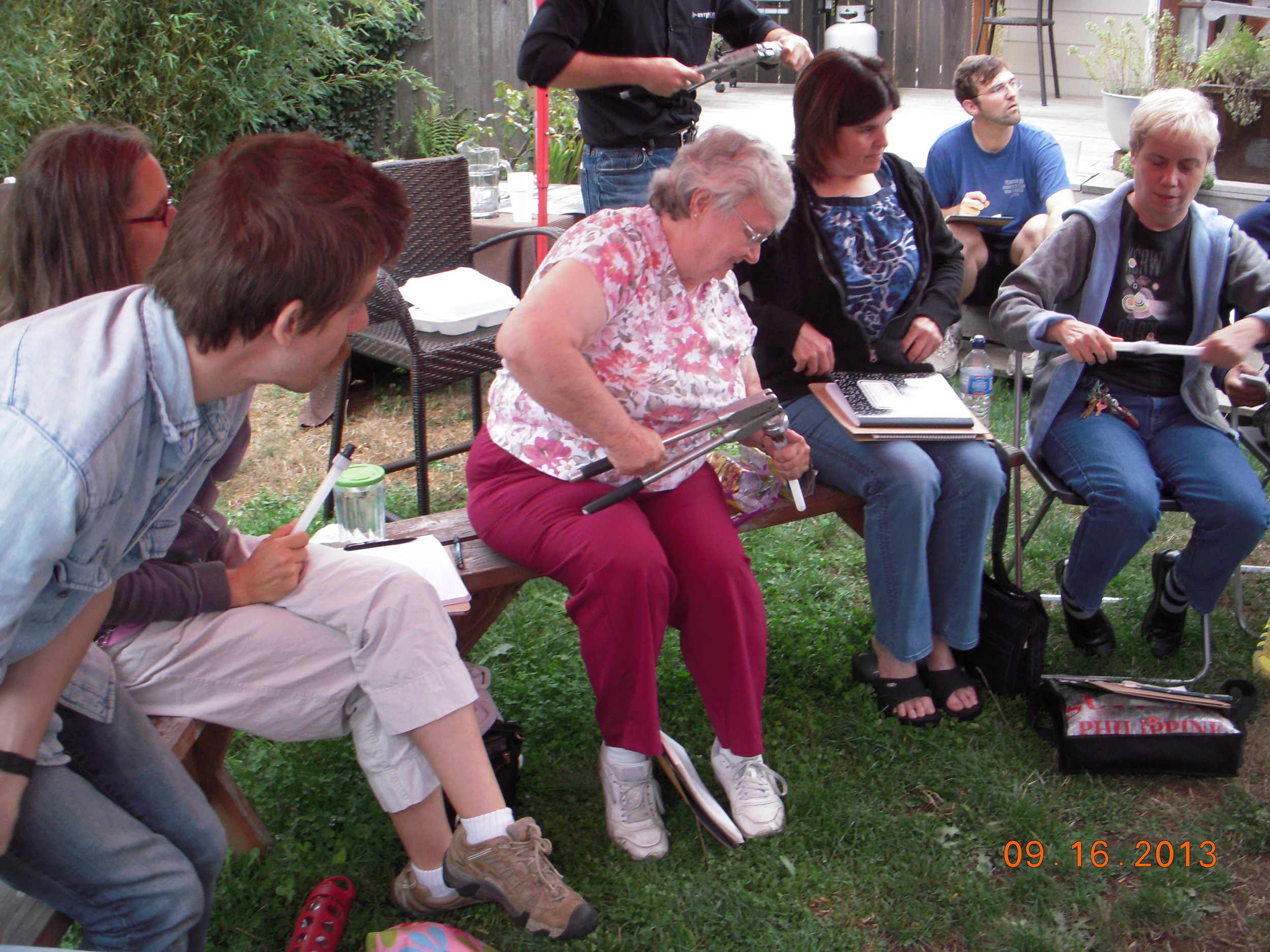 First thing on the docket for Day 5 of Yestermorrow's Tiny House Design-Build course was a field trip to Montpelier to see two little houses. (See all the photos in the Day 5 Slideshow.)
First thing on the docket for Day 5 of Yestermorrow's Tiny House Design-Build course was a field trip to Montpelier to see two little houses. (See all the photos in the Day 5 Slideshow.)
The first was a tiny house on wheels that was constructed by Yestermorrow's first 2-week Tiny House Design-Build class two years ago. This little house was designed as a collaboration between the clients, Susan and Emily, and our co-instructor Paul Hanke. It features a bay window, a set of dormers in the sleeping loft, an alcohol cooktop, and a commercial sink for a bathtub. Life got busy and the homeowners are still working on the house. So they haven't moved in yet, but they're well on their way. They've made themselves a cozy home, sweet home and I look forward to seeing it again on my next trip to Vermont in March for the Less is More course.
The second field trip was to see Ben Cheney's home, which was built by Yestermorrow's Semester Program last year. Ben's 700 square foot 1-bedroom house with a shop in the basement isn't a tiny house, but it is a small house that uses space creatively. It's setting is also spectacular, especially this time of year, with the blue corrugated siding contrasting nicely with the autumn leaves.
We had a great time asking Ben questions about his design decisions - and the cool gadgets he has in his home. If anyone can identify the mysterious unidentified object in the Day 5 Slideshow, please do let us know what it is!
In the afternoon we insulated the floor box of the trailer with rigid foam and sealed up the edges with low expansion spray foam. The floor box is 3 1/2" tall, so we inserted one sheet of 2" rigid foam and sealed the edges then added a sheet of 1 1/2" and sprayed the edges around it. Afterwards we installed the 3/4" subfloor. The AvanTech decking has the screw pattern stamped on it, which makes it especially easy to get it done in a snap. Tomorrow we plan to raise the first walls and it will start to feel like a real house. Stay tuned!
As usual, we had presentations and studio time in the evening after supper. It's been great to see the designs evolve, especially now that several of them are taking shape in the 3rd dimension with models and sections.




